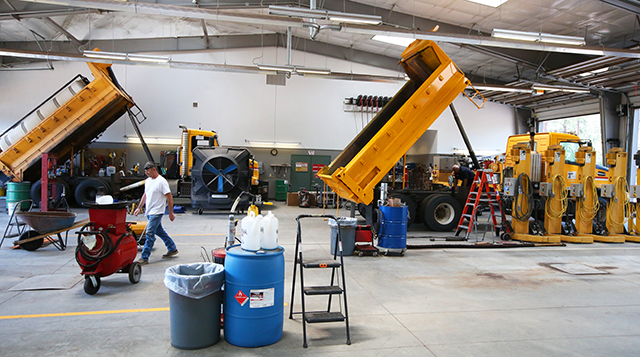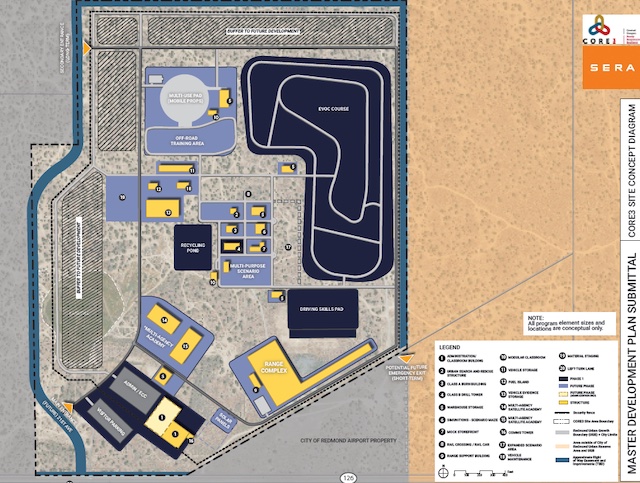Volunteers needed to clear the Oregon Timber Trail
Published 12:00 am Thursday, March 29, 2018

- Volunteers needed to clear the Oregon Timber Trail
A half-mile stretch of the Oregon Timber Trail was buried under some 450 downed logs last summer.
Volunteers with the Oregon Timber Trail Alliance (OTTA) worked diligently with their chain saws to cut logs and clear the section, located in the remote Fremont National Forest of south-central Oregon.
Trending
“A lot of it’s just been buried under fallen trees for 10 years or more,” says OTT project manager Gabriel Tiller. “We definitely saw the need and heard the need from the Forest Service that in some areas they needed people certified in how to use a chain saw to go in there and clear it out.”
The OTT — open to bikers, equestrians, hikers and runners — is a 670-mile route across Oregon from south of Lakeview north to Hood River, located entirely on pre-existing trails or roads. It is made up of about 50 percent singletrack, 40 percent dirt roads and 10 percent pavement, according to Tiller. The trail is organized into four tiers from south to north: the Fremont Tier, Willamette Tier, Deschutes Tier and Hood Tier.
The establishment of the OTT — the route was made public last summer — highlighted the need for more trail-work volunteers proficient in the use of a chain saw to clear downed trees and logs from trails that have seen little use. According to Tiller, the U.S. Forest Service is removing seasonal positions of certified sawyers and shifting the impetus for trail clearing to volunteer organizations such as the OTTA and, locally, the Central Oregon Trail Alliance (COTA).
“The amount of work (local bike groups) put in is immense,” Tiller says. “It turns into a lot of volunteer hours, and most people sort of take that for granted. We’re in a shift right now. It’s really important that we inspire people to want to give back to the trail system, because the Forest Service and other land management agencies are pretty underfunded. So the more we can do to get more people involved, the better.”
As the spring trail season draws near in Central Oregon and across the state, the need for trail volunteers who are certified sawyers is clear. To operate a chain saw legally on national forest land, volunteers must be certified. The OTTA and the Forest Service are hosting a sawyer certification course at Suttle Lodge near Sisters next month for those interested in volunteer trail work involving the use of a chain saw.
The OTT is a partnership among Travel Oregon, the Forest Service and the Portland-based expedition company Limberlost, founded by Tiller. The idea for the trail was inspired by the 2,650-mile Pacific Crest Trail, which is not open to bikes, and other long-distance trails on which cycling is allowed, such as the 800-mile Arizona Trail and the 2,800-mile Great Divide mountain bike route that cuts through the Rocky Mountains from Canada to Mexico.
Trending
The Deschutes Tier of the OTT cuts through Central Oregon on some familiar and perhaps not-so-familiar trails and roads, passing by several Cascade lakes, Mount Bachelor, Tam McArthur Rim, the communities of Sisters and Camp Sherman, and the old Santiam Wagon Road.
The Fremont Tier includes the 175-mile Fremont National Recreation Trail and sprawling views from Winter Rim. It is also the most remote part of the route and requires the most work to keep the trail clear, according to Tiller.
“Without that volunteer workforce it can’t happen,” says James Fagan, a Bend resident and an OTTA board member. “We’ve got to have enough people and there’s not the kind of money … maybe down the line there will be money to pay people to maintain the trails, but at this point it’s all volunteers.”
Fagan has a vested interest in the Oregon Timber Trail, as last summer he purchased 640 acres of land surrounded by the Fremont National Forest and near the OTT.
“It’s pretty amazing country,” Fagan says. “And it’s pretty unknown to most Central Oregon folks. It’s closer than a lot of other things, but people just don’t go there.”
The OTT is focused on backcountry singletrack, so vast sections of the route do not receive a lot of use. And for those less-used portions of the trail, there are no organizations dedicated to maintaining them, such as COTA does for trail systems closer to the urban areas of Central Oregon.
In much the same way that COTA calls on local volunteers to clear and maintain Central Oregon’s renowned singletrack network, the OTTA calls on volunteers from all over Oregon.
Last year, the OTTA hosted 15 work days and logged 2,600 volunteer hours, according to Tiller. More stewardship camp-outs are planned for this spring, including on the Deschutes Tier at Little Cultus Lake, June 8-10.
“We hit the ground running pretty hard, and did a lot of work out on the trail that’s going to mean a lot these first couple years,” Tiller says. “It was pretty cool to see it all come together, and actually look at all the things we accomplished in year one.”
Tiller estimates that about a dozen to two dozen bikepackers — cyclists who ride long distances while camping each night — rode the entire length of the OTT last year. The estimated time to complete the entire OTT for a bikepacker is 20 to 30 days. One issue limiting the number of OTT riders last year was forest fires, which shut down vast swaths of the route by mid-August.
The majority of OTT users last year were day-trippers who covered only shorter portions of the route.
“That was a big takeaway for us, is we’re talking about it as one big trail, but just like the PCT (Pacific Crest Trail), we had about three-quarters of the people who were using the trail were just doing day rides or section rides on it,” Tiller says. “It’s just more accessible that way. One of our goals this spring is to put together the best places to go camp out for a weekend and ride the best trails in each area.”
But the OTT is more than just a trail. Tiller and others behind the project note that the OTTA is committed to stewardship, education and community.
“It’s a way to really experience the backcountry landscapes,” Tiller says, “and learn more about Oregon’s history.”
And perhaps also learn the proper way to use a chain saw.
— Reporter: 541-383-0318,
mmorical@bendbulletin.com








